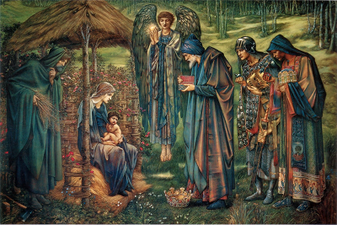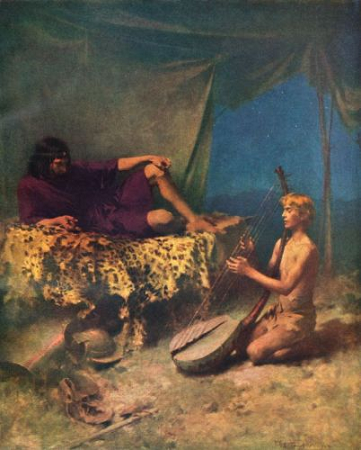
In The Chronology of Josephus (Chapter 13), DR Martin basically debunks the timeline of Josephus and gives very good cause for the reasons he does so:
"The new historical information which has now come to light focuses on the fact of Herod’s death in 1 B.C.E. and the birth of Jesus in 3 B.C.E. But the main reason historians have accepted the 13 March, 4 B.C.E. eclipse as the one associated with Herod’s death is because of two primary factors: the first is a chronological indication made by Josephus concerning Herod’s length of reign, and the second involves the lengths of reign of the sons of Herod who were his successors.
"Let us note what Josephus said about the year lengths of Herod’s reign. We have to say “lengths” (in the plural) because Josephus gave two such indications. He said that Herod had a reign of 37 years from the time he was proclaimed king by the Romans and 34 years from the death of Antigonus which occurred after Herod captured Jerusalem. 1 Scholars have been prone to say that these indications would date the death of Herod to the year 3 B.C.E., but there was no eclipse of the Moon in that year. The nearest eclipse was that of 13 March, 4 B.C.E. Since astronomical data are such powerful evidences, many scholars within the last hundred years have felt it necessary to stretch the chronological statements of Josephus to make them fit the time of this eclipse. They do not mind stretching the facts in this regard because they have to in order to rescue the 13 March eclipse as the one associated with Herod’s death. This is why professors Vermes and Millar acknowledged that Josephus reckoned one year too many. 2 "
In this, the final, chapter of The Star of Bethlehem: The Star that Astonished the World, DR Ernest Martin discusses his reasoning, which is sound in our opinion, and provides a "Chronological Rundown of the Life and Time of Jesus:
"The nativity occurred on September 11, 3 B.C.E. Note the following sequence of historical events.
- Joseph and Mary’s journey to Bethlehem for the “census” occurred at the very close of the Jewish civil year ― an apt time for a registration of peoples to happen. It was in the summer season and before the rains set in that would have made it difficult.
- Jesus was born in a stable in the twilight period of September 11th, the Day of Trumpets, 3 B.C.E.
- He was circumcised on September 18, 3 B.C.E. (the eighth day for the circumcision rite is reckoned inclusively).
- He was dedicated in the temple on October 20/21, 3 B.C.E.
- Luke says: they returned into Galilee, to their own city Nazareth (Luke 2:39). This means they did not go to Egypt after the birth of Jesus. After all, they had only gone to Bethlehem for the “census,” not to move there. So, the family returned to Nazareth in the latter part of October, 3 B.C.E.
- Then for some reason, they decided to move to Bethlehem. This could have been in the spring or summer of 2 B.C.E. They set up house, having no need for the temporary type of shelter they had when Jesus was born (Matthew 2:11).
- On December 5th (Kislev 7) of 2 B.C.E. the youth tore down the eagle from the east entrance to the temple.
- Then on December 25, 2 B.C.E., when the King planet Jupiter came to its stationary point in mid-Virgo the Virgin, it would have been seen “stopped over Bethlehem” as viewed from Jerusalem. The Magi then went to Bethlehem and gave the child the gifts they brought from the east. Jesus was now a paidion (Greek: toddler) not a brephos (Greek: infant, as in Luke). He was old enough to stand and to walk. In the papyrus codex Bodmer V of the Proto-Evangelium of James written in Egypt in the 4th century, it even states that the Magi were able to see Jesus “standing by the side of his mother Mary” (21:3). This shows early opinion that the visit of the Magi to give gifts to Jesus was long after his birth. This giving of gifts by the Magi would have occurred during the days of Hanukkah when Jewish fathers were accustomed to give gifts to their children. This would have appeared quite proper to Jewish people.
- With the warnings of the Magi, Joseph and Mary immediately took Jesus to Egypt in late December of 2 B.C.E.
- Immediately after this, Herod killed all the male children “from two years old and under” (Matthew 2:16). This matter of killing children two years old can now make better sense. If Jesus was born on 11 September, 3 B.C.E., the slaying of the innocents was about 15 months after his birth. If the conception period were also considered, it comes to 24 months exactly. This may be a helpful clue that Jesus was indeed born in September, 3 B.C.E. and why the Magi saw Jesus “standing by the side of his mother Mary.”
- Soon afterward, the two illustrious rabbis were tried and sentenced by the Sanhedrin. This could have been in early January of 1 B.C.E., and then a few days later (on January 10th) the eclipse of the Moon occurred that Josephus mentioned.
- Herod then died about January 28th (Schebat 2) in 1 B.C.E.
- Later, in the spring of 1 B.C.E., the Passover occurred during which 3000 Jewish worshippers lost their lives in the temple.
- In the summer and autumn of that year (1 B.C.E.) The War of Varus took place.
- Then, about twenty-eight years later, Jesus was baptized by John the Baptist sometime in either October or November of C.E. 27 at the beginning of a Sabbatical Year. Jesus then began his official ministry with the Passover and Pentecost season of C.E. 28 and was finally crucified in C.E. 30.
"If what I am suggesting in this book is true, a new understanding in the life of Jesus emerges. Not only do many obscure passages in Josephus make sense, but the chronological and theological indications of the New Testament about the birth of Jesus also become clearer. Roman history as well becomes more understandable for the middle years of Augustus. And while none of us was living some 2000 years ago to prove these points as an eyewitness, there is enough evidence available to give us some reasonable assurance that this new information brings us pretty close to the truth.
"This means that the Star of Bethlehem can be identified and that it fits into the over-all historical theme to make this period in human history more understandable. This is just another reason why all historians who want to comprehend the proper history of Rome in the early Empire period need to focus their attention on “The Star that Astonished the World.” "
___________
Martin, Ernest L. “The Star of Bethlehem: The Star that Astonished the World.” 30 DEC 2012. <http://www.askelm.com/star/star015.htm>
You can purchase the hardbound version of The Star of Bethlehem: The Star that Astonished the World, by DR Ernest L Martin at amazon.com.
You can read or listen to The Star of Bethlehem: The Star that Astonished the World at the ASK ELM website.
You can also listen to David Sielaff’s wonderful audio interview with George Ann Hughes at the Byte Show. These files bring us up to date, for David Sielaff continues the work of Ernest L Martin today. You will find the full interview at The Byte Show. Scroll way down to The Star of Bethlehem series, in fourteen parts.
Also available are all eleven parts of The Star of Bethlehem interviews Ernest L Martin did with Jeff Rense at ASK ELM.

 RSS Feed
RSS Feed